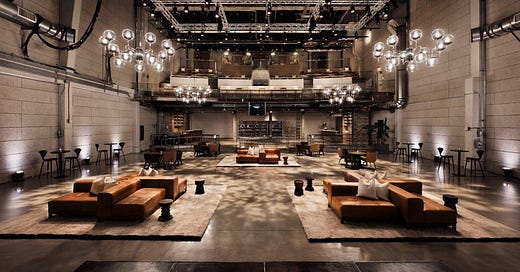Welcome to the Sociology of Business. The Sociology of Business offers a paid membership program. Paid options are for the members of this community who want to be the first to access everything from Web3 brand-building to the new business models and emerging creative formats. Since its inception, the Sociology of Business has been the source code for many other analyses, strategies and brand-building approaches. Members will now have the front-row seat. If you are not yet subscribed, join the community by subscribing below and joining the Sociology of Business Discord. You can find my book, The Business of Aspiration on Amazon and you can find me on Instagram and Twitter. For those new here, in my last analysis, Expensive playthings, I explored luxury’s power of pretend and the games they build around their products, stories, characters, challenges and rewards.
“I know it’s a hassle to come into the office, but if you’re just sitting in your pajamas in your bedroom, is that the work life you want to live?,”Malcolm Gladwell recently asked on The Diary of a CEO podcast. “Don’t you want to feel part of something?” He shared his frustration with the corporate leadership’s inability to explain this effectively to their workforce.
But a convincing explanation is lacking because there are two competing narratives. Efficiency of the office (an economic narrative) is juxtaposed to the office bonding, belonging and camaraderie (a social narrative), leaving organizations to figure out the right SWOT of the two.
To see the solution, we need to look into what the workforce is doing right now - how they organize their days and what their work-related rituals and daily rhythms are - to understand the modern work’s new value curve.
The real value innovation is in separating efficiency and socialization from one, single, centralized physical space. Decoupling space from what’s happening in it effectively changes the meaning of “office.” Instead of the “office,” there is a decentralized network of offices.
To save the office, break it up.
Turn a central, massive office space it into a portfolio of smaller working spaces: hyper-localized nano-offices and micro-clubs. In this scenario a massive brand office becomes a house of smaller local offices or an office family. The biggest roadblock to workforce getting back into the office is commuting; renting a series of mini office spaces where the employees reside successfully removes it.
To access the rest of this analysis, including why decentralization and building diverse workplaces where people are is the future, select one of the paid options below.
Keep reading with a 7-day free trial
Subscribe to The Sociology of Business to keep reading this post and get 7 days of free access to the full post archives.




